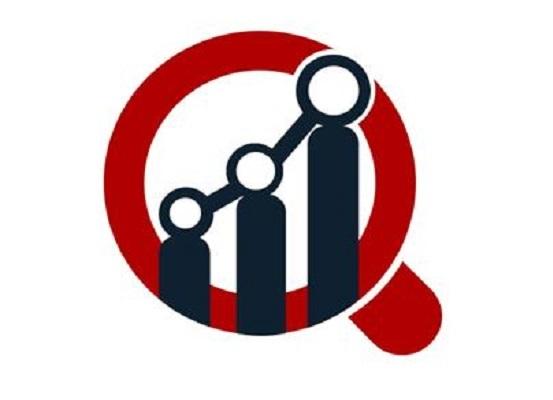Drug allergy market analysis by type, diagnosis, by treatment and by end user- forecast till 2032. The drug allergy market is witnessing a significant surge in attention and development as the prevalence of adverse drug reactions becomes a growing concern in global healthcare. Adverse reactions to medications, ranging from mild to severe, pose a substantial threat to patient safety, leading to an increased focus on the drug allergy market. Market Research Future (MRFR) foresees substantial growth, projecting a robust compound annual growth rate (CAGR) of 6.1% from 2023 to 2032.
The rise in allergic reactions to various pharmaceutical agents has prompted increased research and development efforts to identify, prevent, and manage drug allergies effectively. The drug allergy market encompasses diagnostic tools, treatment options, and preventive measures to address allergic reactions induced by medications.
Factors driving the growth of the drug allergy market include the increasing use of various drugs, a rising aging population, and heightened awareness among healthcare professionals and patients about the importance of identifying and managing drug allergies. An upsurge in the number of reported adverse drug reactions and the need for personalized medicine approaches contribute to the market's expansion.
The market includes various diagnostic methods such as skin tests, blood tests, and patch tests to identify allergic reactions. Additionally, drug desensitization, avoidance strategies, and the development of safer drug formulations are among the strategies employed to manage drug allergies.
Geographically, North America and Europe are expected to dominate the drug allergy market, owing to advanced healthcare infrastructure, robust research and development activities, and a high prevalence of drug allergies. Asia-Pacific and Latin America are poised for significant growth, driven by increasing healthcare awareness, rising allergic reaction incidents, and improving healthcare infrastructure.
Competitive Landscape
The top market players identified by MRFR in the global market are Bayer (US), AstraZeneca (UK), Circassia (US), Johnson & Johnson Services, Inc. (US), HAL Allergy Group (the Netherlands), Stallergenes Greer (UK), MAGNA Pharmaceuticals, Inc. (US), and others.a
Market Segmentation
The global drug allergy market is segmented on the basis of type, diagnosis, treatments, end user, and region.
on the basis of type, which comprises of nonimmunologic, immunologic, and others. Immunologic allergy is sub-segmented into type II reaction, type IV reaction, type I reaction, type III reaction, and others. The non-immunologic allergy is sub-segmented into unpredictable, predictable, and others. The predictable allergy is further segmented into secondary pharmacologic side effects, pharmacologic side effects, drug toxicity, drug overdose, drug-drug interactions, and others. The unpredictable segment is further sub-segmented into idiosyncratic, pseudoallergic, intolerance, and others.
On the basis of diagnosis, the drug allergy market is segmented into blood tests, skin tests, patch tests, and others. The allergy skin test is further segmented into the intradermal test, prick or scratch test, and others.
On the basis of treatments, the drug allergy market is segmented into corticosteroids, antihistamines, withdrawal of the drug, treatment of anaphylaxis, and others. Antihistamines are further sub-segmented into azelastine nasal sprays, cyproheptadine, carbinoxamine, desloratadine, emedastine eyedrops, diphenhydramine, hydroxyzine, levocabastine oral, azelastine eyedrops, levocabastine eyedrops, and others. Corticosteroids is further sub-segmented into inhaled steroids, topical steroids, and others. Inhaled steroids are further segmented into flunisolide, fluticasone propionate, fluticasone furoate, triamcinolone acetonide, budesonide, beclomethasone dipropionate, and others.
On the basis of end-user, the market is segmented into medical research centers, hospitals & clinics, academic institutes, and others.
Regional Overview
The geographical overview of the global drug allergy market report has been conducted in four major regions, specifically North America, Europe, the Asia Pacific, and the rest of the world (including Latin America and the Middle East and Africa).
The Americas lead the drug allergy marketing. The Americas mainly include Latin America and North America, out of which North America accounts for the maximum market share of this region. The US is the top revenue-generating market in North America and is one of the critical markets for global drug allergy treatment. Approximately 10% of the total US population has drug allergies. Latin America's drug allergy market is also growing significantly and mainly includes Brazil, Argentina, and Chile. Europe is the second-largest market in the globe owing to increasing cases of drug allergy.
Europe is primarily divided into Eastern Europe and Western Europe. More developed Western European countries like UK, Germany, and France are leading this market while the East European region is also rising significantly. Growing cases of drug allergies are one of the substantial factors for the progress of the European market.
Asia Pacific region is experiencing the fastest growth rate in the global drug allergy market due to some significant factors such as availability of treatment products, increasing awareness about various drug allergies, and rapidly improving healthcare facilities. Japan is holding a noteworthy market share, while China’s drug allergy market is anticipated to show the fastest growth in this region. Varying healthcare practices and growing patient involvement play a vital role in the expansion of this market.
Due to a lack of knowledge about diseases and conventional medical procedures, among other factors, it is predicted that the Middle East and Africa will experience only modest growth. Due to a number of important variables, including well-developed healthcare facilities and government assistance for enhancing public health, the Middle East leads the regional market.
For More Information Visit @ Market Research Future


